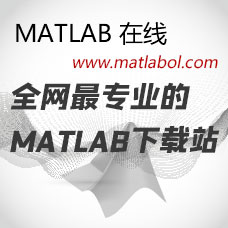Concepts in Programming Languages.pdf
代码说明:
Concepts in Programming Languages by John Mitchell.一本国外经典教材,看了之后对编程语言更加理解。费了很多劲才找到的。Concepts in Programming LanguagesThis textbook for undergraduate and beginning graduate students explains and examines the central concepts used in modern programminglanguages, such as functions, types, memory management, and controlThe book is unique in its comprehensive presentation and comparisonof major object-oriented programming languages. Separate chapters ex-amine the history of objects, Simula and Smalltalk, and the prominentanguages c++ and JavaThe author presents foundational topics, such as lambda calculus anddenotational semantics, in an easy-to-read, informal style, focusing on themain insights provided by these theories. Advanced topics include concurrency and concurrent object-oriented programming. A chapter on logicprogramming illustrates the importance of specialized programming meth-ods for certain kinds of problemsThis book will give the reader a better understanding of the issuesand trade-offs that arise in programming language design and a betterappreciation of the advantages and pitfalls of the programming languagesthey useJohn C. mitchell is Professor of Computer Science at Stanford University,where he has been a popular teacher for more than a decade. Many of hisformer students are successful in research and private industry. He received his ph D. from mit in 1984 and was a member of technical staff atat&T Bell Laboratories before joining the faculty at Stanford. Over thepast twenty years, Mitchell has been a featured speaker at internationalconferences; has led research projects on a variety of topics, includingprogramming language design and analysis, computer security, and applications of mathematical logic to computer science; and has written morethan 100 research articles. His previous textbook, Foundations for Pro-gramming Languages(MIT Press, 1996), covers lambda calculus, typesystems, logic for program verification, and mathematical semantics ofprogramming languages. Professor Mitchell was a member of the programming language subcommittee of the ACM/ieEE Curriculum 2001standardization effort and the 2002 Program Chair of the aCm principlesof programming languages conferenceCONCEPTS NPROGRAMMINGLANGUAGESJohn c. mitchellStanford UniversityCAMBRIDGEUNIVERSITY PRESSPUBLISHED BY THE PRESS SYNDICATE OF THE UNIVERSITY OF CAMBRIDGEThe Pitt Building, Trumpington Street, Cambridge, United KingdomCAMBRIDGE UNIVERSITY PRESSThe Edinburgh Building, Cambridge CB2 2RU, UK40 West 20th Street, New York, NY 10011-4211 USA477 Williamstown Road, Port Melbourne vic 3207, AustraliaRuiz de alarcon 13, 28014 Madrid, spainDock House, The Waterfront, Cape Town 8001, South Africahttp://www.cambridge.orgo Cambridge university press 2004First published in printed format 2002isBN 0-511-03492-X eBook(adobe readerISBN 0-521-78098-5 hardbackContentsPrefacepage IxPart 1 functions and foundations1 Introduction1.1 Programming Languages1.2 Goals1.3 Programming Language History3561.4 Organization: Concepts and Languages2 Computability2. 1 Partial Functions and computability102.2 Chapter SummaryExercises163 Lisp: Functions, Recursion, and Lists3.1 Lisp History183.2 Good Language design203. 3 Brief Language overview223.4 Innovations in the Design of Lisp253.5 Chapter Summary: Contributions of LispExercises404 Fundamentals484.1 Compilers and syntax484.2 Lambda calculus4.3 Denotational semantics4.4 Functional and Imperative Languages4.5 Chapter SummaryExercisesContentsPart 2 Procedures, Types, Memory Management, and Control5 The algol Family and ML5.1 The Algol Family of Programming Languages5.2 The Development of C5.3 The LCF System and ml5.4 The Ml Programming Language1035.5 Chapter summary121Exercises1226 Type Systems and Type Inference1296.1 Types in Programming1296.2 Type Safety and Type Checking1326.3 Type Inference1356.4 Polymorphism and Overloadin1456.5 Type Declarations and Type Equality1516.6 Chapter Summary155Exercises1567 Scope, Functions, and storage Management1627.1 Block-Structured Languages1627.2 In-Line blocks1657.3 Functions and procedures1707.4 Higher-Order functions1827.5 Chapter summary190Exercises1918 Control in Sequential Languages2048.1 Structured control2048.2 Exceptions2078.3 Continuations2188.4 Functions and evaluation order2238.5 Chapter summary227Exercises8Part 3 Modularity, Abstraction, and object-Oriented Programming9 Data Abstraction and Modularity2359.1 Structured Programming2359.2 Language Support for Abstraction2429.3 Modules9.4 Generic Abstractions2599.5 Chapter Summary269Exercises27110 Concepts in Object-Oriented Languages27710.1 Object-Oriented design27710.2 Four Basic concepts in object-Oriented languages278Contents10.3 Program Structure28810.4 Design Patterns29010.5 Chapter summary29210.6 Looking Forward: Simula, SmalltalkC++Java293Exercises29411 History of objects: Simula and smalltalk30011.1 Origin of Objects in Simula30011.2 Objects in Simula30311.3 Subclasses and Subtypes in Simula30811.4 Development of smalltalk31011.5 Smalltalk Language features31211.6 Smalltalk flexibilit31811.7 Relationship between Subtyping andInheritance2211.8 Chapter SummaryExercises32712 objects and Run-Time Efficiency: C++33712.1 Design goals and Constraints33712.2 Overview of c++34012.3 Classes. Inheritance and Virtual functions34612.4 Subtyping35512.5 Multiple inheritance12.6 Chapter summary366Exercises36713 Portability and Safety: Java38413.1 Java language overview38613.2 Java Classes and Inheritance38913.3 Java Types and Subtyping39613.4 Java System architecture40413.5 Security Features41213.6 Java summary417Exercises420Part 4 Concurrency and Logic Programming14 Concurrent and Distributed Programming43114.1 Basic Concepts in Concurrency43314.2 The actor model44114.3 Concurrent ML14.4 Java concurrency45414.5 Chapter Summary466Exercises469Contents15 The Logic Programming Paradigm and Prolog47515. 1 History of logic Programming15.2 Brief Overview of the logic Programming Paradigm4715. 3 Equations solved by Unification as Atomic Actions15.4 Clauses as Parts of procedure declarations48215.5 Prologs Approach to Programming48615.6 Arithmetic in Prolog49215.7 Control, Ambivalent Syntax, and Meta-Variables49615.8 Assessment of Prolog50515.9 Bibliographic remarks50715.10 Chapter Summary507Appendix a Additional Program Examples509A 1 Procedural and Object-Oriented organization509Glossary521Index525
下载说明:请别用迅雷下载,失败请重下,重下不扣分!


